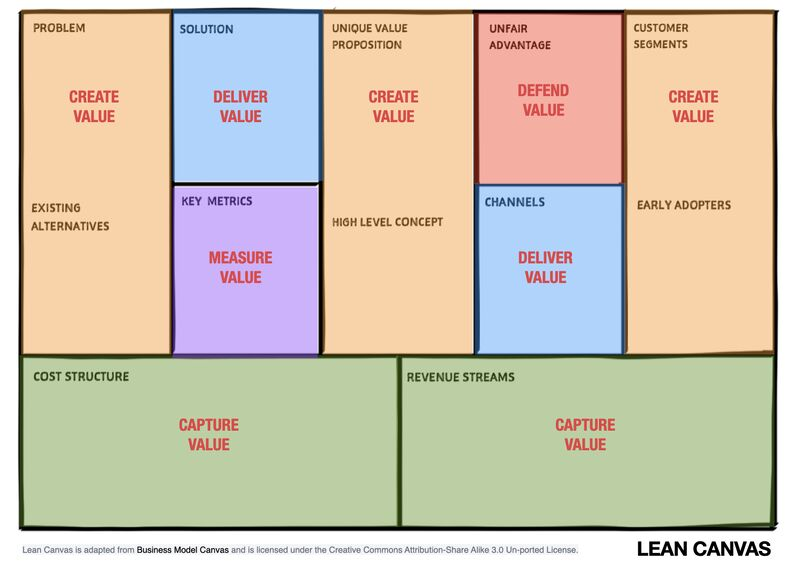Simplify your startup plan with the Lean Canvas
 By
Christina
·
2 minute read
By
Christina
·
2 minute read
For entrepreneurs, having a clear business strategy is essential. But traditional business plans can be time-consuming and outdated. That's where the Lean Canvas comes in. It’s a flexible, one-page business model. That helps entrepreneurs find viable strategies before they run out of resources. Striking a balance between rigid business plans and not planning at all. Swapping the guesswork for a clear structure.
The Lean Canvas focuses on three core jobs: creating, delivering, and capturing value. When it comes to creating value, it guides you to think about how your solution will meet customer needs. You’ll consider how it overcomes existing challenges in a unique way. Giving you an edge and shaping your Unique Value Proposition (UVP). A strong UVP shows why your product or service is the best fit for your target customers.

Delivering value is about reaching and engaging your users. This means outlining a clear approach to solving their problem and building awareness. The Lean Canvas helps you map out the customer journey. Recognising the problem to adopt your solution. This builds loyalty by making customers understand and appreciate the benefits you offer.
Finally, capturing value focuses on profitability. Here, you’ll set a pricing structure that aligns with your startup while optimising costs. The canvas encourages exploring ways to boost profits. Whether by reducing operational costs, or refining pricing to balance revenue and customer satisfaction.
The Lean Canvas also stresses the importance of measuring and defending value. Tracking performance metrics is crucial for evaluating growth and financial health. Which provides useful insight for stakeholders and potential investors. To defend a competitive edge, it prompts you to think about what makes your product hard to replicate. Securing your place in a shifting market.
For startups, the Lean Canvas helps avoid common pitfalls. By concentrating on customer segments and real problems, it ensures that your idea meets actual market needs. Reducing the risk of poor market research. The canvas also pushes you to think about financial planning early on. By focusing on revenue streams and cost structures for solid financial footing. Plus, tracking key metrics discourages premature scaling, supporting steady, sustainable growth.
Here are some of fn7's tips on using the Lean Canvas
1. Keep It Concise
- Stick to one page and avoid excess detail. The Lean Canvas works best as a quick-reference tool.
2. Focus on One Customer Segment
- Tailor each canvas to a specific customer group. If needed, create separate canvases for different segments.
3. Clarify and Define the Problem
- Understanding your customer’s pain points leads to stronger, more relevant solutions.
4. Collaborate with Your Team
- Involving others in the process can provide diverse insights and refine your approach.
5. Refine Often
- The Lean Canvas isn’t static. Adjust it as you gather new feedback and insights.
6. Track Key Metrics
- Choose a few key metrics aligned with your goals. Too much data can dilute your focus.
7. Stay Customer-Centric
- Connect each section to deliver value to your target audience. To keep your strategy effective.
In short, the Lean Canvas is a practical tool for startups aiming for long-term success. It encourages thoughtful planning across essential areas. Giving founders the structure they need to thrive.